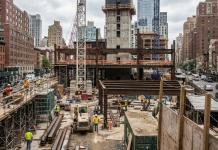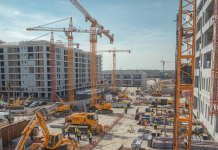Five Texas bills just gave developers the power to skip rezoning entirely. For qualifying commercial-to-residential conversions, the six to eighteen-month approval gauntlet is gone.
I’ve been tracking regulatory changes across Texas and Arkansas, where they intersect with residential construction economics. This legislation changes the economics of urban development across the state.
The Mechanics of What Changed
HB 24, SB 840, SB 1883, SB 15, and SB 6 take effect September 1, 2025. The biggest change allows qualifying commercial properties in cities with 150,000 or more residents to convert by-right into multifamily or mixed-use developments.
No zoning change required. No variance. No special-use permit.
The traditional rezoning process typically consumes six to eighteen months. These bills eliminate that timeline entirely for qualifying conversions. Developers proceed directly to permitting.
The Market in Numbers
Texas is projected to issue approximately 165,000 single-family permits in 2025, representing a 2.5 percent increase above 2024 levels. With nearly 500,000 new residents expected, demand for both rental and for-sale housing remains strong.
Builders are responding to population pressure. The new zoning flexibility adds another option.
In Port Aransas, Corpus Christi, and Galveston, population-driven growth supported by energy sector expansion is colliding with new zoning flexibility. The result opens opportunities for mixed-use development in markets that previously moved slowly through approval processes.
Why Mixed-Use Matters Now
Mixed-use zoning is gaining momentum in Texas urban areas, allowing residential, commercial, and sometimes industrial uses within the same area. Properties with multiple use allowances offer better ROI because they support diverse tenant or buyer demand.
The by-right conversion provision essentially accelerates this model for existing commercial properties. A struggling retail center in a qualifying city can become residential or mixed-use without navigating traditional zoning battles.
For construction professionals, the implications are clear. Projects that previously required extensive community meetings and city council approvals now require documentation that the property qualifies under the new statutes.
Coastal Markets
Coastal Texas markets present a specific case study. Chapman Cove in Port Aransas and similar developments are being designed with short-term rental zoning from the start. The vacation rental market remains strong, with over 1.6 million listings nationwide showing 30% growth.
But coastal construction faces complexity around flood zones, hurricane risk, and insurance costs. Builders who integrate resilient design from the outset gain competitive edge in markets where buyers prioritize long-term durability.
The zoning reforms don’t eliminate these requirements. They do eliminate one layer of approval process, which matters when project timelines directly affect financing costs.
Development Strategy
The September 1 effective date creates a clear timeline for developers evaluating commercial properties in qualifying cities. Properties that required speculative zoning applications can now be assessed with more certainty.
Adaptive reuse projects will see the biggest impact. Converting existing commercial structures into residential or mixed-use developments often makes more economic and environmental sense than demolition and new construction. The regulatory friction around such conversions has been significant. These bills eliminate it for qualifying properties.
The construction industry tends to respond to regulatory changes with a lag. Developers need time to identify properties, secure financing, and design projects that meet new zoning allowances and existing codes.
By mid-2026, permit data will show the impact in commercial-to-residential conversions across Texas cities above 150,000 population. The early movers will be developers who already had projects stalled in rezoning.
What This Means for Your Role
Developers can now underwrite commercial-to-residential conversions with timeline certainty. The six to eighteen-month rezoning risk is eliminated for qualifying properties.
Architects should familiarize themselves with by-right conversion requirements. Design work can begin with permitting timelines instead of approval uncertainty.
Construction professionals will see more adaptive reuse projects hit the market. Existing structures require different expertise than ground-up builds, particularly around structural assessment and code compliance for conversions.
The bills don’t change building codes or safety requirements. They change who controls the timeline. Before September 1, city councils controlled project viability through zoning decisions. After September 1, qualifying projects move on developer timelines.
If you’re evaluating commercial properties in Texas cities above 150,000 population, the question changed. It’s no longer whether you can get approval. It’s whether your property qualifies.








